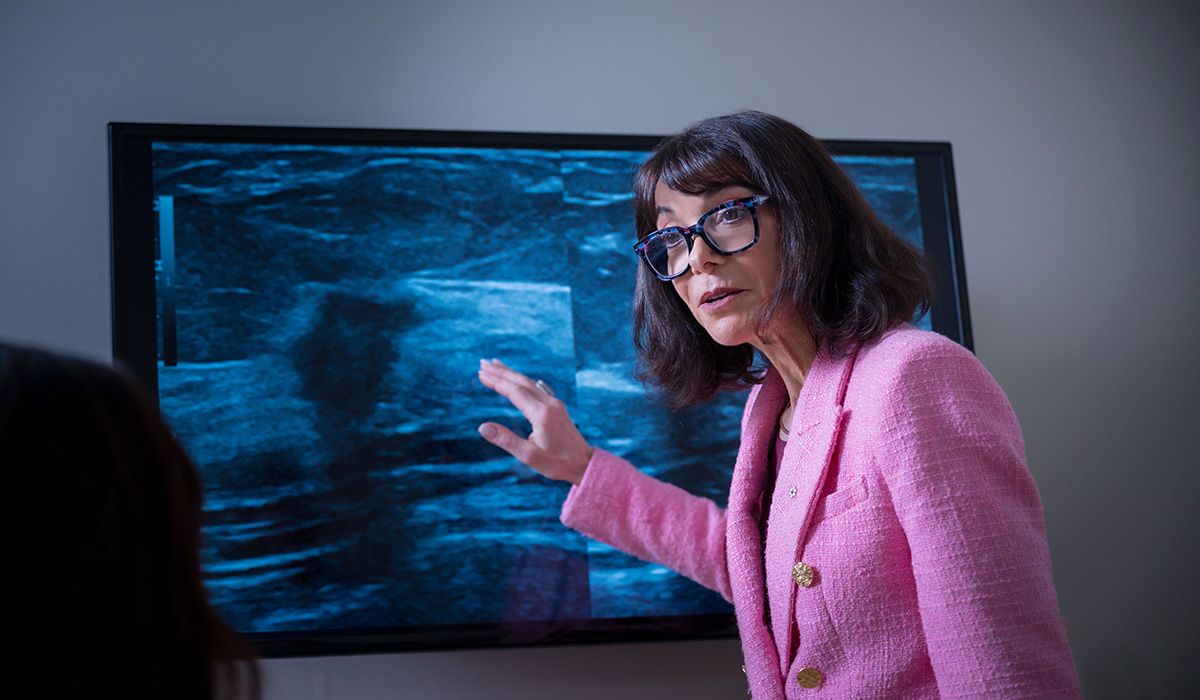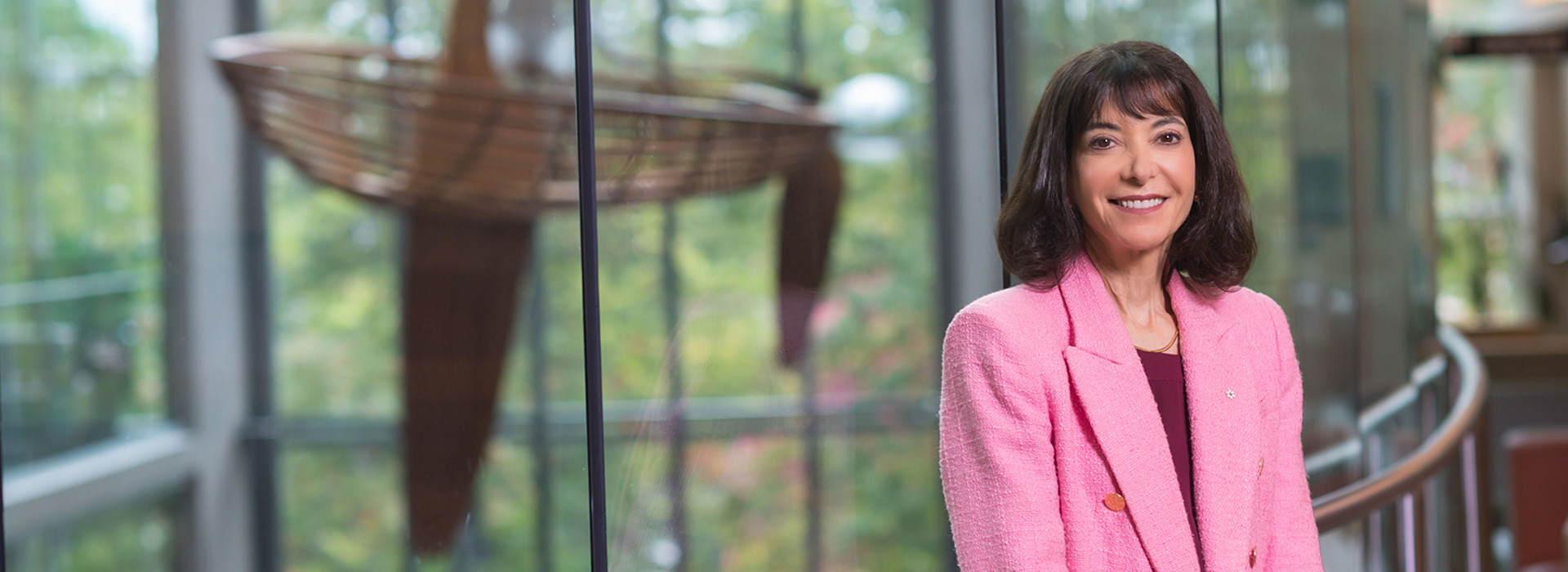
Detecting breast cancer sooner
Dr. Paula Gordon’s research is helping ensure women have access to life-saving breast cancer screening.
One in eight women will develop breast cancer in their lifetime. But when detected early, before it spreads, the five-year survival rate among breast cancer patients is 99 per cent.
Dr. Paula Gordon, clinical professor of radiology at UBC’s Faculty of Medicine, is a driving force behind changes to screening practices that are helping to detect breast cancer sooner, and in more people. Her research — the first to show the benefits of supplemental ultrasound screening for women with dense breasts — together with patient advocacy prompted B.C. to become the first province in Canada to cover supplement screening for people with dense breasts using ultrasound.
We spoke with Dr. Gordon about why breast density matters and what people of all gender identities should know about breast cancer screening.
When should people start having regular breast cancer screening?
Screening saves the most lives when done annually starting at age 40. Approximately 17 per cent of breast cancers occur in women aged 40 to 49, and breast cancer grows faster in younger women. Finding cancer early often means we can pursue less aggressive treatment options, resulting in better quality of life, and a better chance of survival.
We’re fortunate in B.C. because our province is one of only five that allows women to start screening at age 40. However, only 25 per cent of eligible women in B.C. are attending screenings in their forties. It’s important that we raise awareness that this option is available to women. If breast cancer is not found early with screening, it can grow and spread to lymph nodes and other organs by the time it’s detected.
What about screening for transgender, gender-diverse and non-binary people?
While we often talk about breast cancer in terms of women, breast cancer can occur in people of all gender identities. Breast cancer really just refers to cancer of the breast or chest tissue — and this can affect everyone.
Screening recommendations will differ based on individual factors, so it’s important for healthcare providers to take a patient-centred approach that considers each person’s circumstances. In B.C., breast cancer screening is recommended for trans women over age 40 who have been on gender-affirming hormones, like estrogen, for five or more years. Trans men are also recommended to have chest cancer screening, unless they’ve had top surgery, in which case it is still recommended that they monitor the health of their chest tissue in consultation with a primary care provider.
Moving forward, we must continue to work to create healthcare settings that are inclusive and welcoming for members of the LGBTQ2SIA+ community, and to provide health information that reflects their realities.

Dr. Paula Gordon consults with a patient.
How long should people continue screening?
Screening should continue as long as a person is in good health and with a projected life expectancy of 10 or more years. In B.C., our mammography screening program stops sending reminder letters at age 74, but women can continue to self-refer without a doctor’s requisition. A person’s decision to continue screening later in life should depend on their health, consultations with their primary health care provider, and their personal values.
Why does breast density matter?
Breast density is a measure of the amount of glandular and fibrous tissue in the breast compared to the amount of fatty tissue. Women with dense breasts have less fatty tissue and more glandular and fibrous tissue. There are four categories of breast density — A, B, C and D — with categories C and D being considered dense breasts, and the only way to determine where you fit on this scale is through a mammogram.
This matters for two main reasons. First, having dense breasts makes it harder to detect cancer. On a mammogram, both cancers and normal dense breast tissue appear white, so we say, “it’s like trying to see a snowball in a snowstorm.” And second, women with dense breasts are at a higher risk of getting breast cancer.
For this reason, mammograms are not enough for women with dense breasts, which is why it’s important that we inform women of their breast density and provide supplemental screening using ultrasound, as is done here in B.C.
1/8
women will develop breast cancer in their lifetime
17%
of breast cancers occur in women 40 to 49
99%
The five-year survival rate when breast cancer is detected early, before it has spread
What other factors increase a person’s risk of breast cancer?
There are a number of risk factors, some of which people can control and others they can’t. The ones you can’t control include mutations in genes like BRCA1 and BRCA2, a family history of breast cancer, having Ashkenazi Jewish ancestry, women who started their menstruation younger than average or went through menopause later than average, and women who never had children. All these factors put people at higher risk.
Then there are the factors people can control. You can reduce your risk of breast cancer by maintaining a healthy body weight, exercising regularly, minimizing alcohol intake and not smoking. Menopausal combined hormone treatment when used for more than 5-7 years has also been linked to an increased risk of breast cancer, so people should consider using the lowest possible dose, for the shortest possible period of time, and taking estrogen through a transdermal option such as a patch, gel or lotion.
Women can calculate their personal risk of breast cancer with an easy-to-use online tool.
What signs of possible breast cancer should people watch for?
We talk about being breast aware — know what feels normal for your breasts, and if you notice a change, you should see your primary care provider.
Everyone’s normal will feel different. Some people’s breasts feel soft and uniform, some feel full of lumps, some feel firm like concrete. The best way to know what’s normal for you is by doing regular breast self-exams and to watch for any changes in how they look and feel. Remember not to panic if you notice a change. Many changes have benign causes, but some could be a signal of something more serious, such as breast cancer. That’s why it’s important to talk with your health care provider.
Published: October 10, 2023
